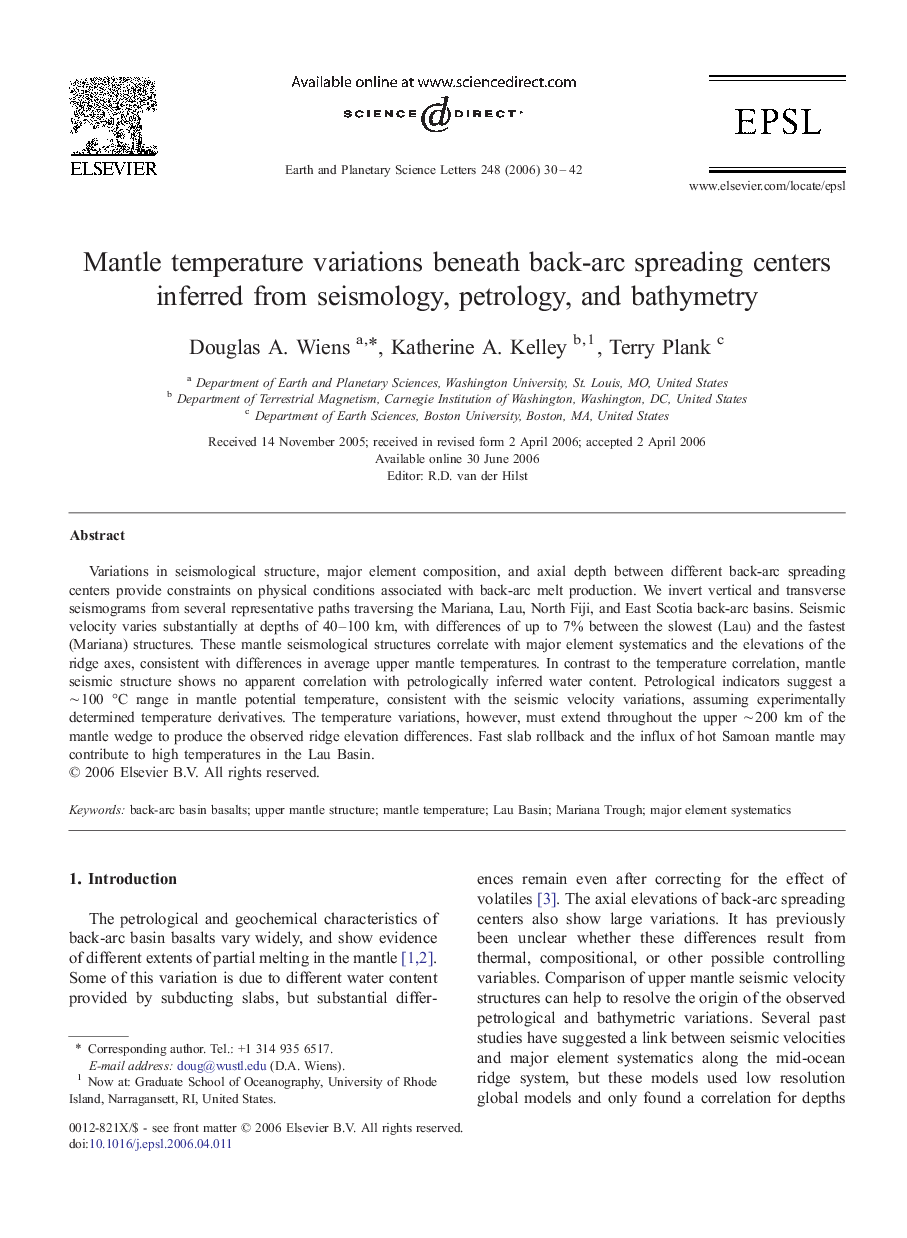| Article ID | Journal | Published Year | Pages | File Type |
|---|---|---|---|---|
| 4680813 | Earth and Planetary Science Letters | 2006 | 13 Pages |
Variations in seismological structure, major element composition, and axial depth between different back-arc spreading centers provide constraints on physical conditions associated with back-arc melt production. We invert vertical and transverse seismograms from several representative paths traversing the Mariana, Lau, North Fiji, and East Scotia back-arc basins. Seismic velocity varies substantially at depths of 40–100 km, with differences of up to 7% between the slowest (Lau) and the fastest (Mariana) structures. These mantle seismological structures correlate with major element systematics and the elevations of the ridge axes, consistent with differences in average upper mantle temperatures. In contrast to the temperature correlation, mantle seismic structure shows no apparent correlation with petrologically inferred water content. Petrological indicators suggest a ∼ 100 °C range in mantle potential temperature, consistent with the seismic velocity variations, assuming experimentally determined temperature derivatives. The temperature variations, however, must extend throughout the upper ∼ 200 km of the mantle wedge to produce the observed ridge elevation differences. Fast slab rollback and the influx of hot Samoan mantle may contribute to high temperatures in the Lau Basin.
